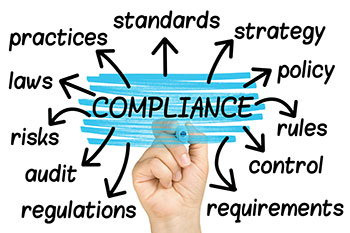6 Reasons Your Projects Fail: How Requirements Management Can Help
Requirements define the functional and physical needs of a product. In a sense, requirements serve as the roadmap for product development, providing product development teams guidance for what is expected of the product. While there is a tremendous amount of work involved, putting together a list of requirements is actually the easier part; it is managing those requirements that becomes complicated and often where things fall apart. In fact, as Christopher Lindquist states in CIO Magazine, “Fixing the Requirements Mess,” “As many as 71% of [embedded] software projects that fail do so because of poor requirements management, making it the single biggest reason for project failure.” Project failure leads to wasted investments, excess cost, and lost revenue. How can companies avoid this?
The following six challenges have been identified as some of the top reasons companies struggle with requirements management. By addressing these challenges, companies will establish a good foundation for success, helping to avoid the risks of project failure. This will lead to winning new customers, more innovative products, greater efficiency, and higher profitability.

Requirements are not well defined.
The first step of requirements management is accurately capturing the requirement and defining it. Confusion about what is required pretty much guarantees the requirement will not be met and increases the chance of product failure. A well-defined requirement links to a customer need. This provides clarity for the development team and also keeps work focused on achieving market success. Requirements should also be clear and measurable so that it’s easy to validate if the requirement has been met.
Poor change management for requirements
If requirements stayed static, requirements management would be much simpler. However, change is inevitable. Market changes, new technologies, competitive responses, new approaches, design defects, and test failures can all lead to change. The inability to identify all the impacts and notify everyone impacted by a change leads to poor change management. A poorly executed change means wasted efforts, outdated information, and design conflicts. This drives up cost and creates delay.
Lack of a single source of truth for requirements
Today’s products typically involve multiple engineering disciplines, each working on interdependent components of the product. Each discipline tends to its own design and development tools. Requirements go across disciplines, but without a single source of truth, it is nearly impossible to get a complete view of the product. The interdependencies without a single source of truth make it practically impossible to identify the entire impact of a change or test failure.
No link between requirements and test
A key part of the requirements definition is how you validate it. If there is no link between the requirement and test, how do you know if the requirement has been met? How do you know what has been validated? Without the link between requirements and test, it is very difficult to assess the status of the product. Then when a test fails, tracing back to the requirement is a significant challenge.
 Inability to trace requirements throughout the development lifecycle
Inability to trace requirements throughout the development lifecycle
Once the requirement has been defined, if it can not be traced through its lifecycle, it will be very difficult to understand how changes or problems with a component, subsystem, or product impact the requirements or how a requirement change impacts work in process. In addition, when new products have similar requirements, identifying what to reuse will be far more time consuming. Platform design and design variants, will also be far more complicated to manage without the traceability between requirements and the lifecycle assets.
 Lack of traceability for functional safety or standards
Lack of traceability for functional safety or standards
Significant documentation is required of companies who must comply with regulations or meet standards. Those that lack requirements traceability must invest significant time preparing records to prove compliance. Those that have traceability have a far easier time producing reports and auditable records that support compliance as they can automatically trace the regulatory requirement down to the details, proving it was satisfied.
By addressing these challenges with best practices for requirements management, companies will be much better positioned for project success. This success can then lead to higher profitability.